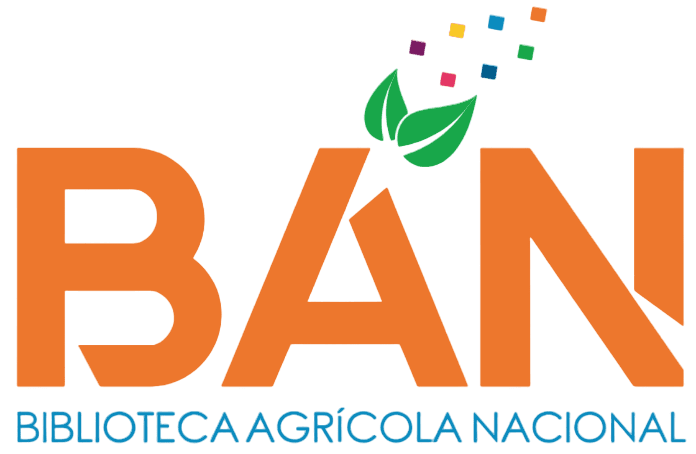Biofungicidas y fitofortificante en el control de Sclerotium rolfsii en el cultivo de alcachofa (Cynara scolymus L.)
| dc.contributor.advisor | Mattos Calderón, Luz Leonor | |
| dc.contributor.author | Salas Ruiz, Nidia Dennise | |
| dc.date.accessioned | 2025-03-28T19:29:12Z | |
| dc.date.available | 2025-03-28T19:29:12Z | |
| dc.date.issued | 2025 | |
| dc.description | Universidad Nacional Agraria La Molina. Facultad de Agronomía. Departamento Académico de Fitopatología | |
| dc.description.abstract | La presente investigación tuvo como finalidad determinar la efectividad de cuatro biofungicidas y un fitofortificante sobre Sclerotium rolfsii Sacc. La fase de laboratorio se realizó en los laboratorios de Fitopatología de la facultad de Agronomía de la UNALM, la fase experimental en campos de la empresa Cynara Perú S.A.C. en la provincia de Chincha, departamento de Ica. El diseño estadístico empleado en laboratorio fue el Completamente al Azar (D.C.A) con 11 tratamientos y 5 repeticiones por tratamiento, para la fase de campo fue el de Bloques Completamente al Azar (D.B.C.A) con 4 bloques, 11 tratamientos y 10 repeticiones por tratamiento. Se realizó la Prueba de Comparación de medias de Tukey (p=0.05) para todas las variables evaluadas. En las pruebas in vitro con micelio en desarrollo el mayor porcentaje de inhibición del desarrollo micelial fue para T3 (Bacillus subtilis – 2 kg/ha) seguido por T2 (Bacillus subtilis – 1 kg/ha) con 61.943 % y 60.0 % respectivamente. En las pruebas con esclerotes el mayor porcentaje de inhibición del desarrollo micelial lo tuvo el T3 (Bacillus subtilis – 2 kg/ha) seguido por T4 (B. thuringiensis – 1 kg/ha) con 89.722 % y 81,943 %. En campo, la presencia de la enfermedad se dio a los 84 ddt, el menor porcentaje de incidencia de la enfermedad fue para T3 (Bacillus subtilis – 2 kg/ha) y T2 (Bacillus subtilis – 1 kg/ha) con 12.5 % para ambos, seguidos por T4 (B. thuringiensis – 1 kg/ha) con 20.0 %. El menor ABCPE fue para T3 (Bacillus subtilis – 2 kg/ha) y T2 (Bacillus subtilis – 1 kg/ha) con 437.5 y 507.5. El mayor rendimiento (kg/ha) fue para T3 (Bacillus subtilis – 2 kg/ha) y T2 (Bacillus subtilis – 1 kg/ha) con 1146.7 y 1146.1. Se evidencia la eficiencia de Bacillus subtilis y Bacillus. thuringiensis en el control de Sclerotium rolfsii en el cultivo de alcachofa. | |
| dc.description.abstract | The purpose of this research was to determine the effectiveness of four biofungicides and a phytofortifier on Sclerotium rolfsii Sacc. The laboratory phase was carried out in the Plant Pathology laboratories of the Faculty of Agronomy of UNALM, the experimental phase in fields of the company Cynara Peru S.A.C. in the province of Chincha, department of Ica. The statistical design used in the laboratory was the Completely Randomized (C.R.D.) with 11 treatments and 5 repetitions per treatment, for the field phase it was the Completely Randomized Blocks (C.R.D.) with 4 blocks, 11 treatments and 10 repetitions per treatment. The Tukey Means Comparison Test was performed (p = 0.05) for all the variables evaluated. In the in vitro tests with developing mycelium, the highest percentage of inhibition of mycelial development was for T3 (Bacillus subtilis – 2 kg/ha) followed by T2 (Bacillus subtilis – 1 kg/ha) with 61.943 % and 60,000 % respectively. In the tests with sclerotes, the highest percentage of inhibition of mycelial development was for T3 (Bacillus subtilis – 2 kg/ha) followed by T4 (B. thuringiensis – 1 kg/ha) with 89.722 % and 81.943 %. In the field, the presence of the disease occurred at 84 ddt, the lowest percentage of disease incidence was for T3 (Bacillus subtilis - 2 kg / ha) and T2 (Bacillus subtilis - 1 kg / ha) with 12,500 % for both, followed by T4 (B. thuringiensis - 1 kg / ha) with 20,000 %. The lowest AUDPC was for T3 (Bacillus subtilis - 2 kg / ha) and T2 (Bacillus subtilis - 1 kg / ha) with 437.5 and 507.5. The highest yield (kg / ha) was for T3 (Bacillus subtilis - 2 kg / ha) and T2 (Bacillus subtilis - 1 kg / ha) with 1146.7 and 1146.1. The efficiency of Bacillus subtilis and Bacillus is evident. thuringiensis in the control of Sclerotium rolfsii in artichoke crops. | |
| dc.format | application/pdf | |
| dc.identifier.uri | https://hdl.handle.net/20.500.12996/7035 | |
| dc.language.iso | spa | |
| dc.publisher | Universidad Nacional Agraria La Molina | |
| dc.publisher.country | PE | |
| dc.rights | info:eu-repo/semantics/openAccess | |
| dc.rights.uri | https://creativecommons.org/licenses/by-nc-nd/4.0/ | |
| dc.subject | Bacillus subtilis | |
| dc.subject.ocde | https://purl.org/pe-repo/ocde/ford#4.01.07 | |
| dc.title | Biofungicidas y fitofortificante en el control de Sclerotium rolfsii en el cultivo de alcachofa (Cynara scolymus L.) | |
| dc.type | info:eu-repo/semantics/bachelorThesis | |
| dc.type.version | info:eu-repo/semantics/publishedVersion | |
| renati.advisor.dni | 08284019 | |
| renati.advisor.orcid | https://orcid.org/0000-0003-4773-8582 | |
| renati.author.dni | 70337569 | |
| renati.discipline | 811036 | |
| renati.juror | Casas Díaz, Andrés Virgilio | |
| renati.juror | Cadenas Giraldo, Carlos Alberto | |
| renati.juror | Apaza Tapia, Walter Eduardo | |
| renati.level | https://purl.org/pe-repo/renati/level#tituloProfesional | |
| renati.type | https://purl.org/pe-repo/renati/type#tesis | |
| thesis.degree.discipline | Agronomía | |
| thesis.degree.grantor | Universidad Nacional Agraria La Molina. Facultad de Agronomía | |
| thesis.degree.name | Ingeniero Agrónomo |
Files
Original bundle
1 - 3 of 3
Loading...
- Name:
- salas-ruiz-nidia-dennise.pdf
- Size:
- 3.05 MB
- Format:
- Adobe Portable Document Format
- Description:
- Texto completo

- Name:
- IO-027-2025-Salas.pdf
- Size:
- 3.64 MB
- Format:
- Adobe Portable Document Format
- Description:
- Informe originalidad

- Name:
- BAN-Salas.pdf
- Size:
- 230.07 KB
- Format:
- Adobe Portable Document Format
- Description:
- Autorización
License bundle
1 - 1 of 1

- Name:
- license.txt
- Size:
- 1.63 KB
- Format:
- Item-specific license agreed upon to submission
- Description:

